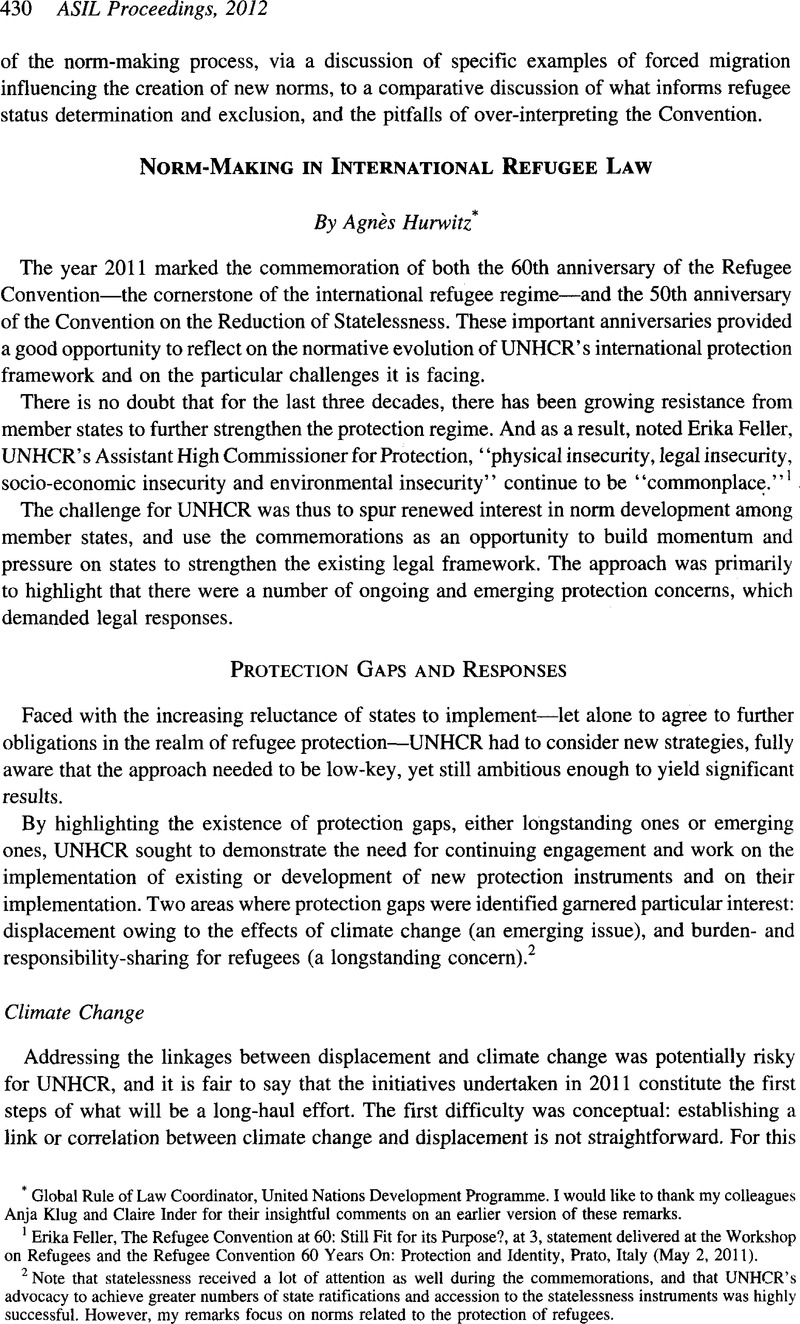Article contents
Norm-Making in International Refugee Law
Published online by Cambridge University Press: 28 February 2017
Abstract

- Type
- International Norm-Making on Forced Displacement: Challenges and Complexity
- Information
- Copyright
- Copyright © American Society of International Law 2012
References
1 Erika Feller, The Refugee Convention at 60: Still Fit for its Purpose?, at 3, statement delivered at the Workshop on Refugees and the Refugee Convention 60 Years On: Protection and Identity, Prato, Italy (May 2, 2011).
2 Note that statelessness received a lot of attention as well during the commemorations, and that UNHCR’s advocacy to achieve greater numbers of state ratifications and accession to the statelessness instruments was highly successful. However, my remarks focus on norms related to the protection of refugees.
5 According to UNHCR, 80 percent of all refugees reside in the developing world. See Feller, supra note 1, at 7.
6 At http://www.UNHCR.org/pages/4a2792106.html. See also Durieux, Jean-François & Betts, Alexander, Convention Plus as a Norm-Setting Exercise, 20 J. Refugee Stud. 509–35 (2007)Google Scholar.
7 See Discussion Paper on International Cooperation to Share Burden and Responsibilities, http://www.UNHCR.org/4df871e69.html.
- 2
- Cited by




